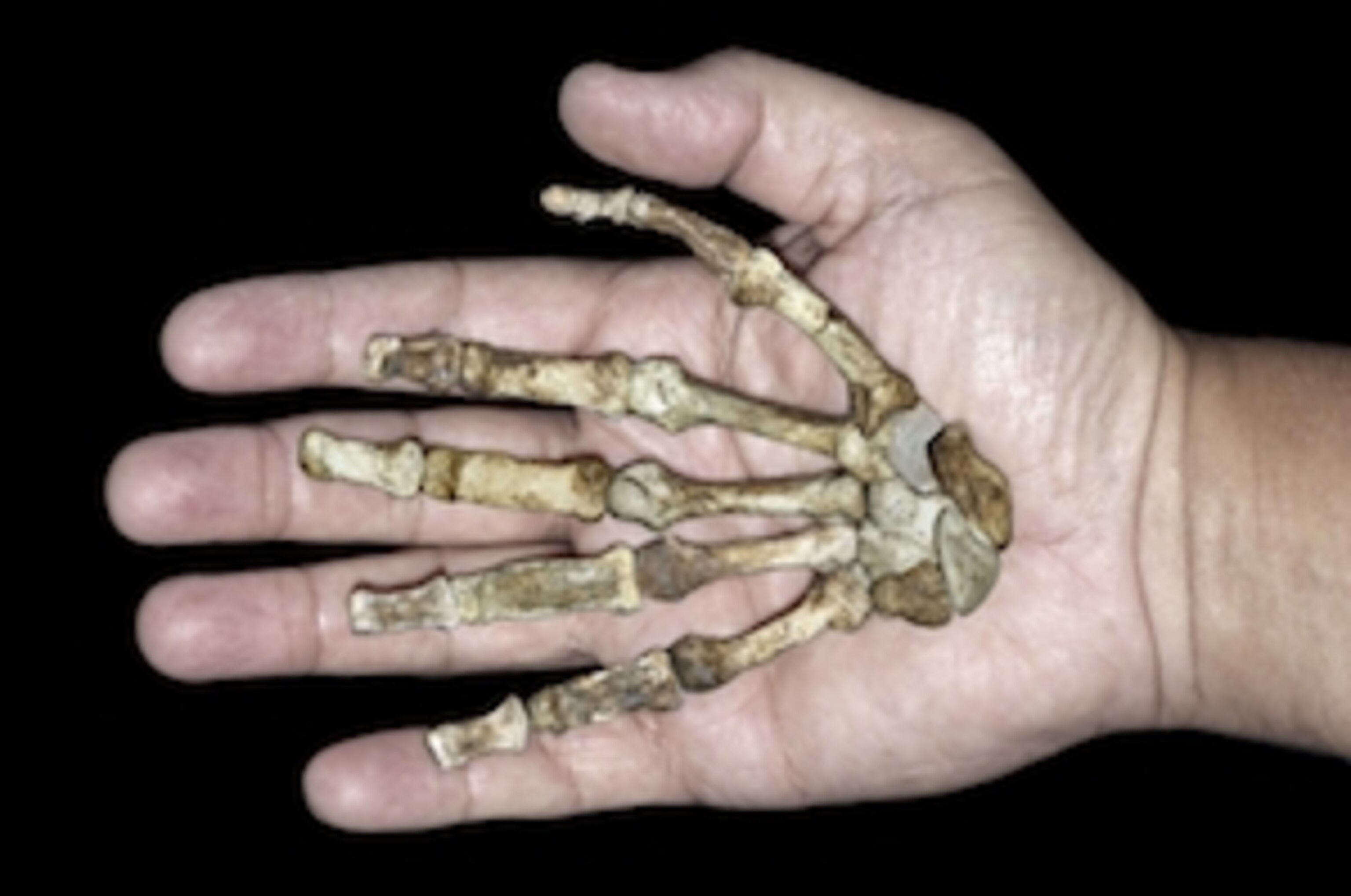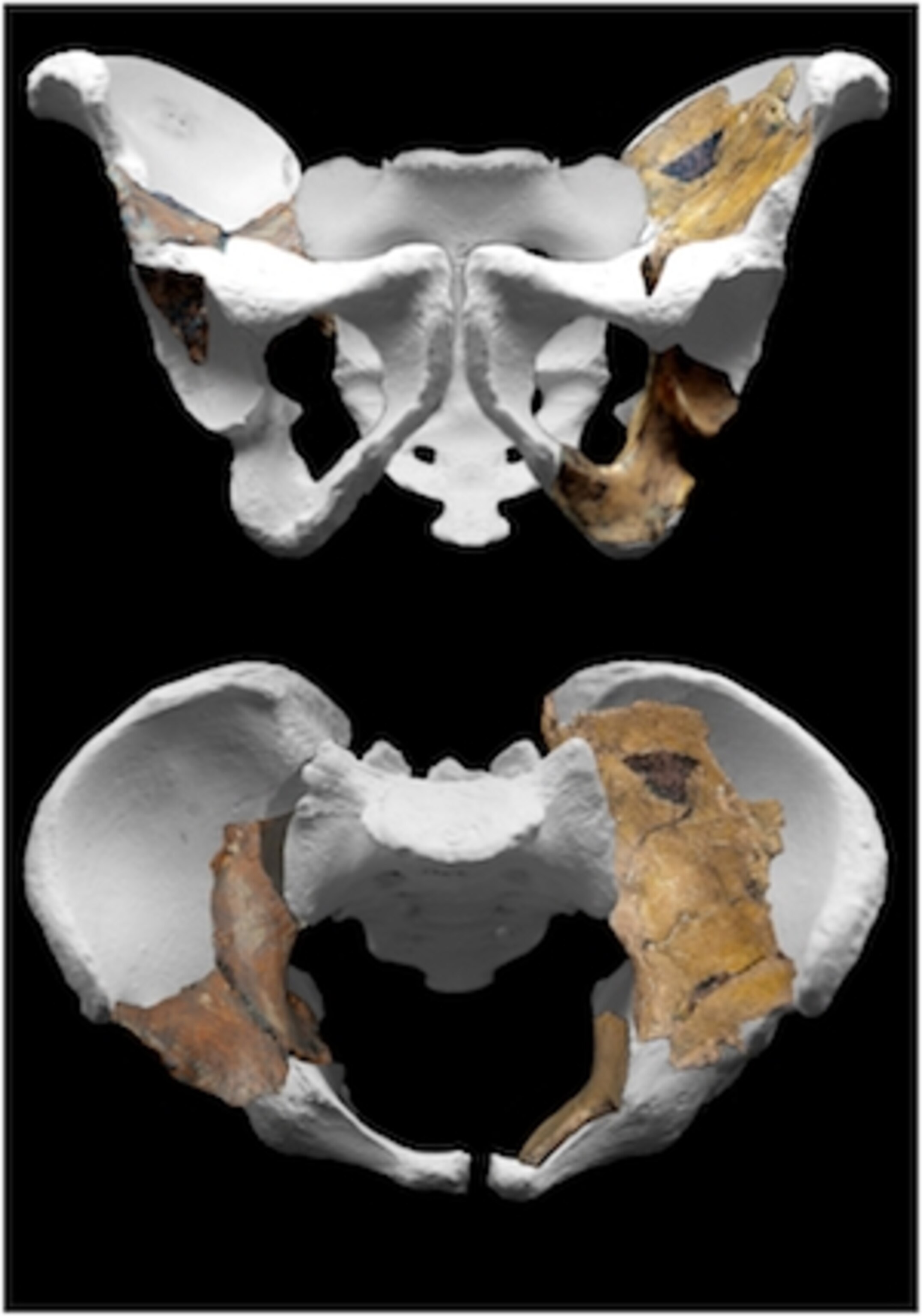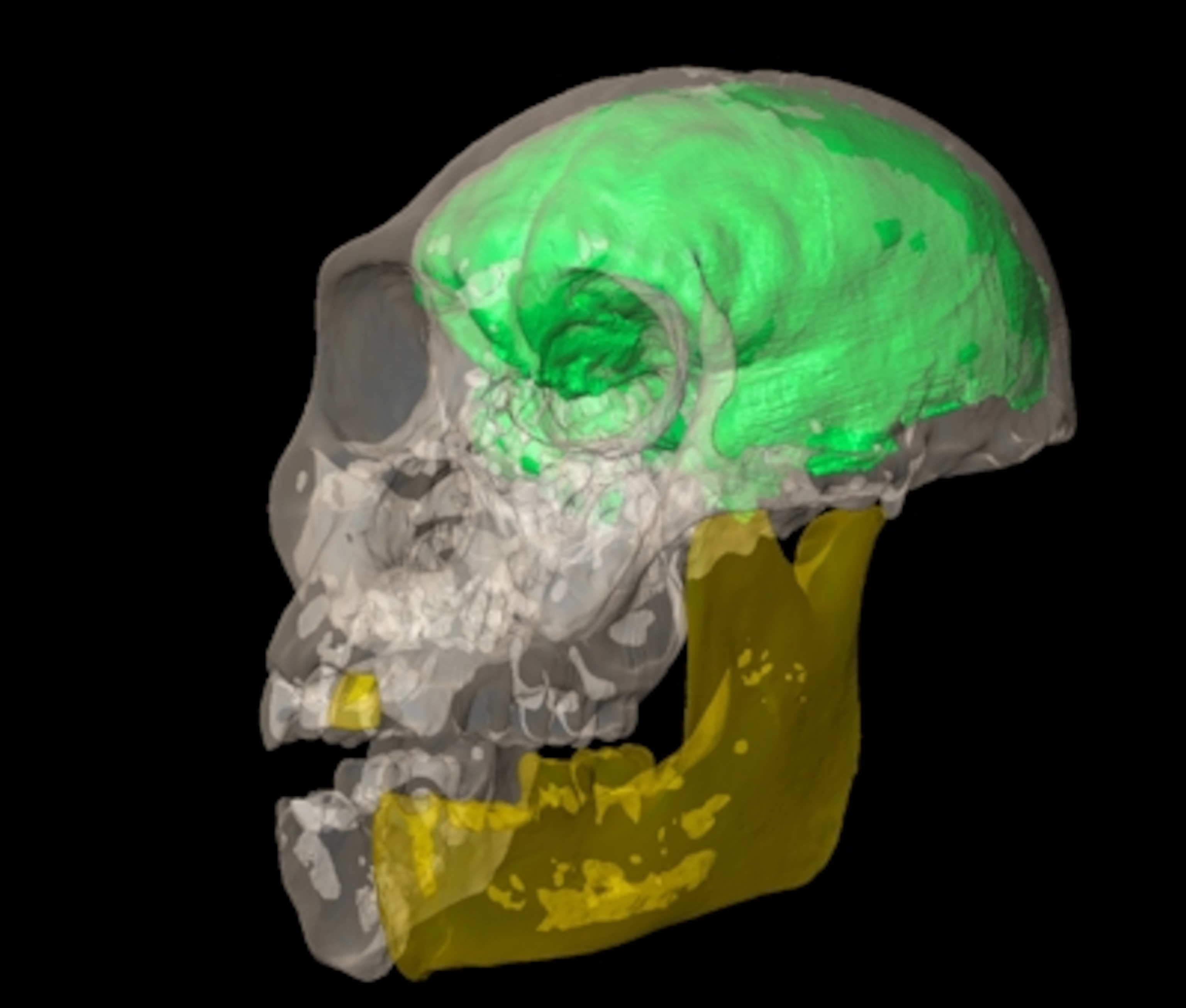If you were this man, you’d be smiling too.
The man is Lee Berger, a paleoanthropologist at the University of Witwatersrand in South Africa. He’s holding the skull of Australopithecus sediba, a 1.98 million year old relative of humans, otherwise known as a hominin. In April 2010 Berger and his colleagues first unveiled the fossil in the journal Science. As I wrote in Slate, Berger argued that A. sediba was the closest known cousin to our genus Homo. Hominins branched off from other apes about 7 million years ago, but aside from becoming bipedal, they were remarkably like other apes for about five million years. Among other things, they were short, had long arms, and had small brains. Berger and his colleagues saw in A. sediba what biologists often find in transitional forms–a mix of ancestral and newer traits. It has Homo-like hands, a projecting nose, and relatively long legs. It was intermediate in heigh between earlier hominins and the tall Homo. And it still had a small brain and long arms. (In August, Josh Fishman wrote a feature for National Geographic on A. sediba, complete with excellent reconstructions.)
It wasn’t just finding such a potentially significant fossil that would make you smile if you were Lee Berger. It’s how much stuff he and his colleagues have found. The skull that Berger holds would be enough to keep several scientists busy for years. But Berger and his team have much more. In fact, A. sediba is, in some ways, now even better represented than far more recent hominin relatives.
Today, Science has turned over much of this week’s issue to follow-up papers from Berger’s team, in which they share some of the goodies. Here, for example, is A. sediba’s hand. Before this specimen came to light, paleoanthropologists had much less to look at to study the origin of the human hand. The best specimen came from a 1.75 million year old hominin called Homo habilis. It got the name Homo in part because the fossils were found along with stone tools, which were considered a sign of a very human-like creature. Researchers also found bones from its hand–but only 13 fragments. In this picture of A. sediba‘s hand, just about every bone is real. This is what paleoanthropologists dream about at night.

Tracy Kivel, a paleoanthropologist at the Max Planck Institute, led a team of researchers who compared A. sediba’s hand to the hands of humans, chimps, gorillas, and extinct hominins. They found even more mingling of old and new traits than before. The hand has ridges for powerful muscles that run up the length of the hand. Chimpanzees have muscles like these, which give them stronger grips as they climb around in trees. Earlier hominins have them too. We don’t. Instead, we have long thumbs and fleshy pads on our finger tips, which are great if you’ve come to depend on your skill to make and use tools. A. sediba has them too.
Scientists have found likely hominin stone tools dating back 2.6 million years ago; last year a team of researchers kicked up some controversy by claiming to have found signs of stone tools 3.4 million years ago. It’s clear that by the time A. sediba came on the scene, hominins had been using stone tools for hundreds of thousands of years. It’s too bad that Berger and his colleagues haven’t found any tools alongside A. sediba’s bones, to see what they could do with these transitional hands. Then again, why should he get all the fun?
Things got particularly intriguing when Kivel and company compared A. sediba‘s hand to Homo habilis’s. Remember, Homo habilis is about 250,000 years younger than A. sediba. Yet A. sediba‘s hand is actually more like our own than that of Homo habilis. It’s got some wrist bones that are shaped to handle strong forces transmitted from the thumb–the sort of forces you might expect from whacking stones together to make a cleaver, for example. Evidence such as this suggests that Homo habilis branched off first from the ancestors of A. sediba and later hominins like ourselves, and then later A. sediba branched off from our own lineage. Along the way, the hand gradually became less adapted for tree-climbing, and acquired more traits we use to handle tools.

In other papers, scientists take a look at A. sediba‘s brain and hips. The two are more intimately associated than you might think at first. We have huge brains even at birth, which make child-bearing a tricky proposition in our species, because they have to be able to pass through the birth canal. We humans have wide hips compared to other apes, and some researchers have argued that they evolved in tandom with our expanding brains. (See this column I wrote recently for more compensations in our bodies for big brains.) But it turns out that A. sediba–which had a small brain–already had broader hips than earlier hominins. Whatever drove its hip expansion, a big head wasn’t it.

While the A. sediba brain was small, it demonstrates that in hominin brain evolution, size isn’t everything. The skull Berger holds here contains a beautifully preserved cavity inside. When he and his colleagues put the fossil in a scanner, they were able to reconstruct the shapes of a lot of the left hemisphere of the brain and the front chunk of its right. The shapes of some parts of the brain (in particular, a part of the brain called orbitofrontal cortex) are more like our own than like earlier hominins.
Reading this, I can’t help but dabble in a little paleo-phrenology. The orbitofrontal cortex is a crucial node in our emotional network, where neurons assign value to things and can tamp down or ramp up our automatic responses of fear and delight. Did a glimpse of human feelings mark this great transition, long before human-sized brains evolved?
I doubt scientists will ever answer that question, but not to worry: there are many more answers A. sediba will be able to provide.
[Images: Berger, courtesy of Lee Berger and University of Witwatersrand; hand and pelvis by Peter Schmid, courtesy of Lee Berger and University of Witwatersand; brain, photo by ESRF/KJ Carlson, courtesy of Lee Berger and the University of Witwatersrand]

